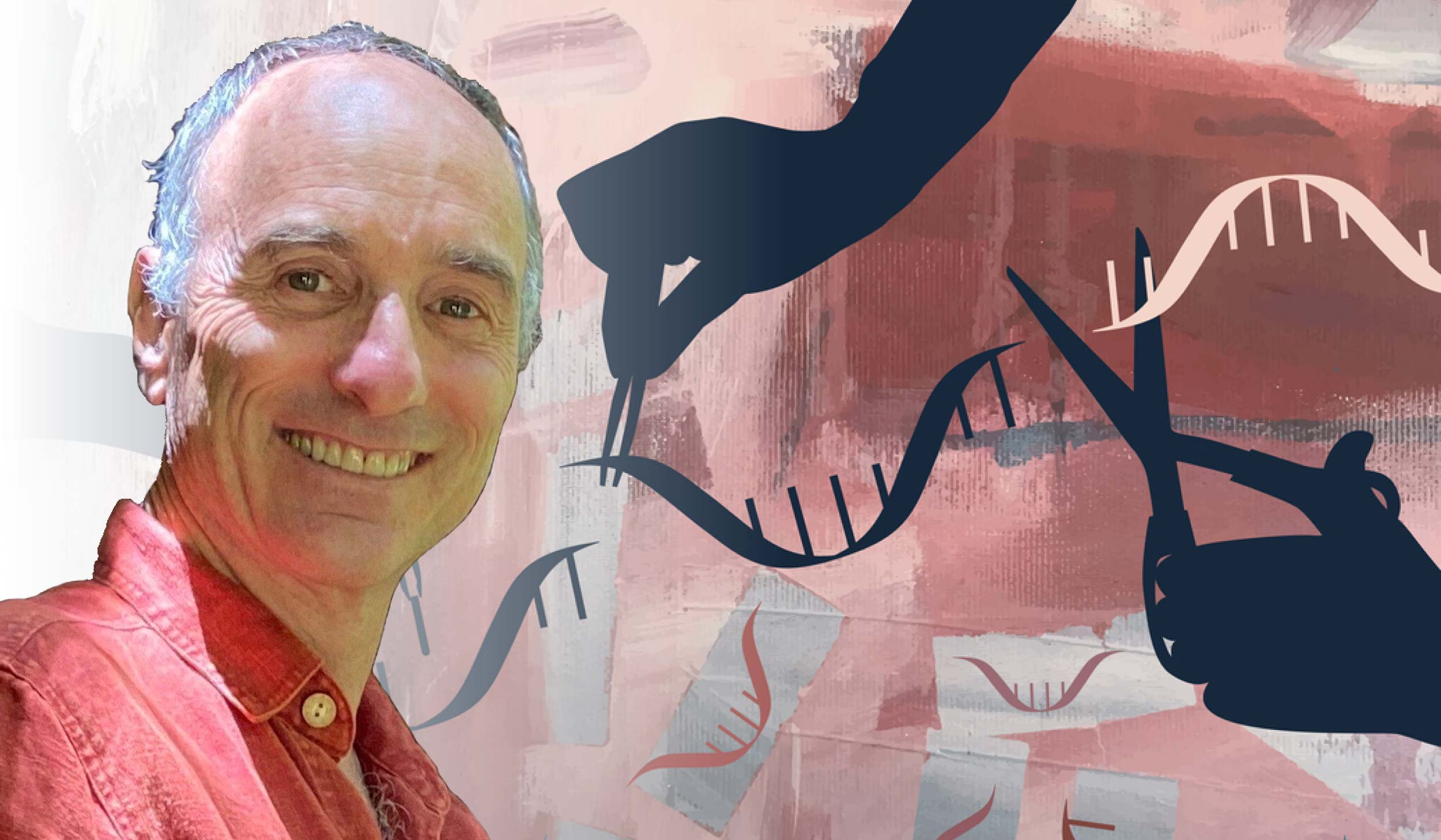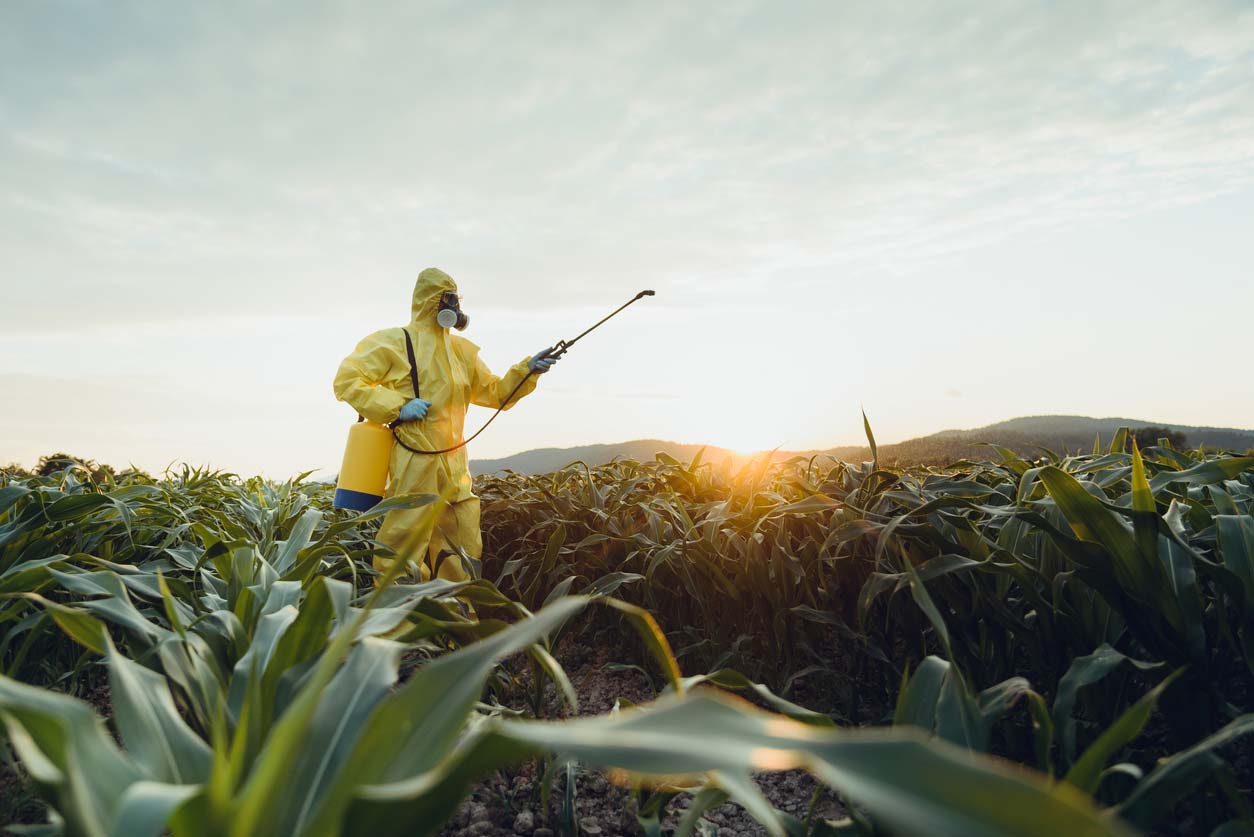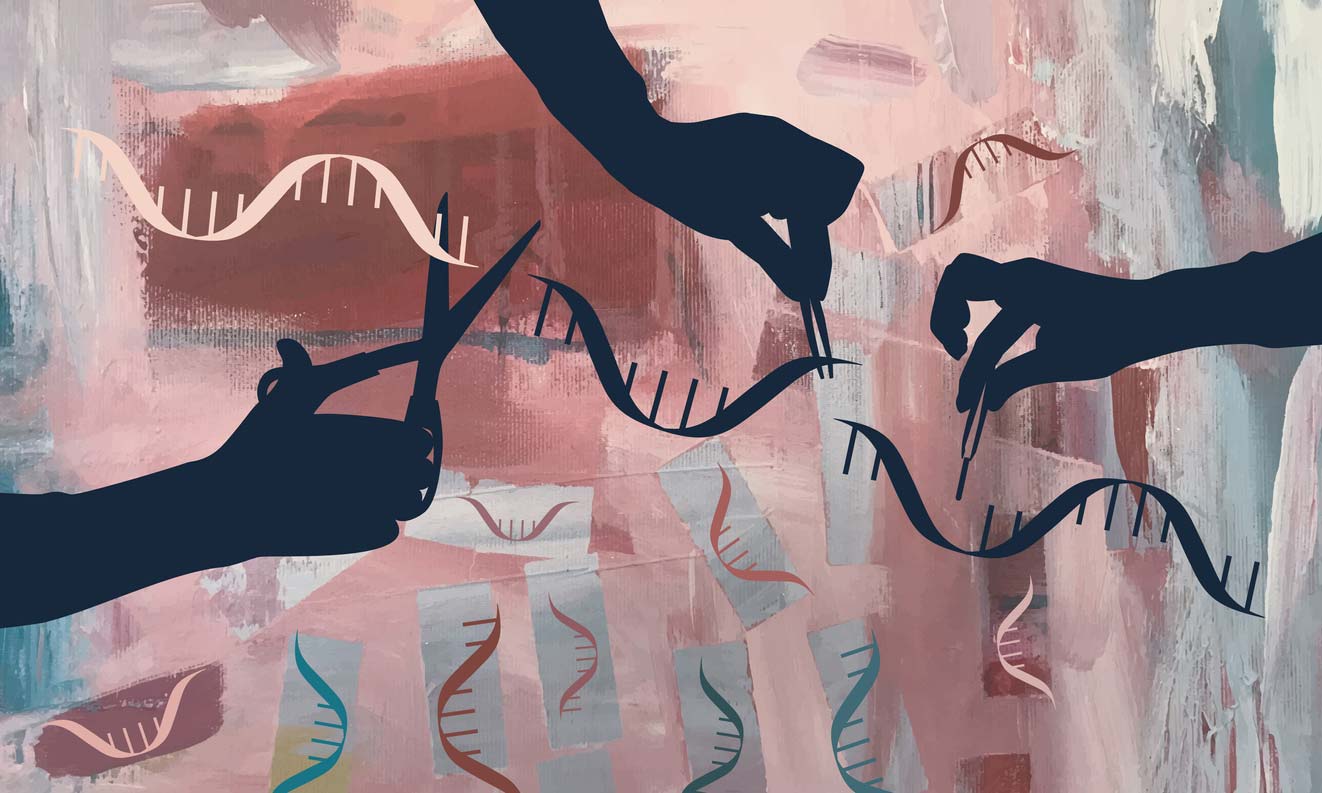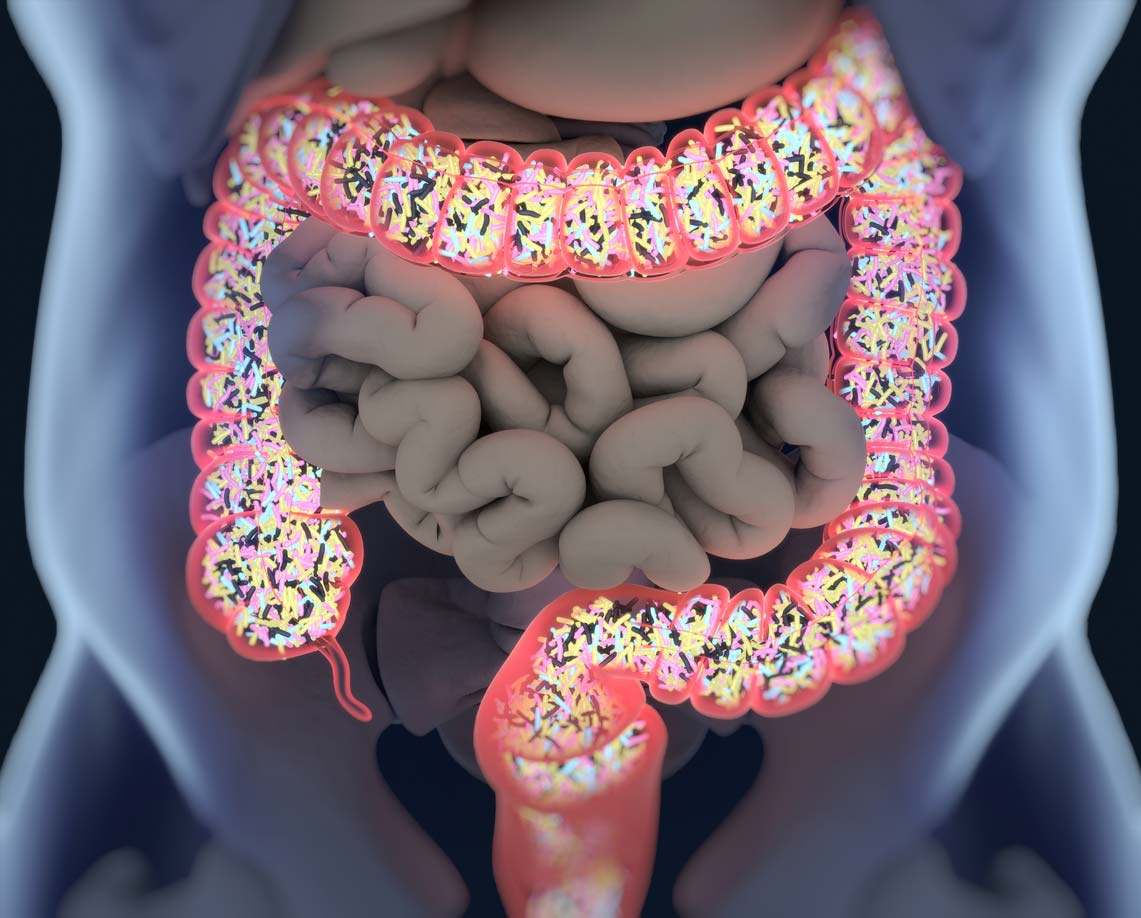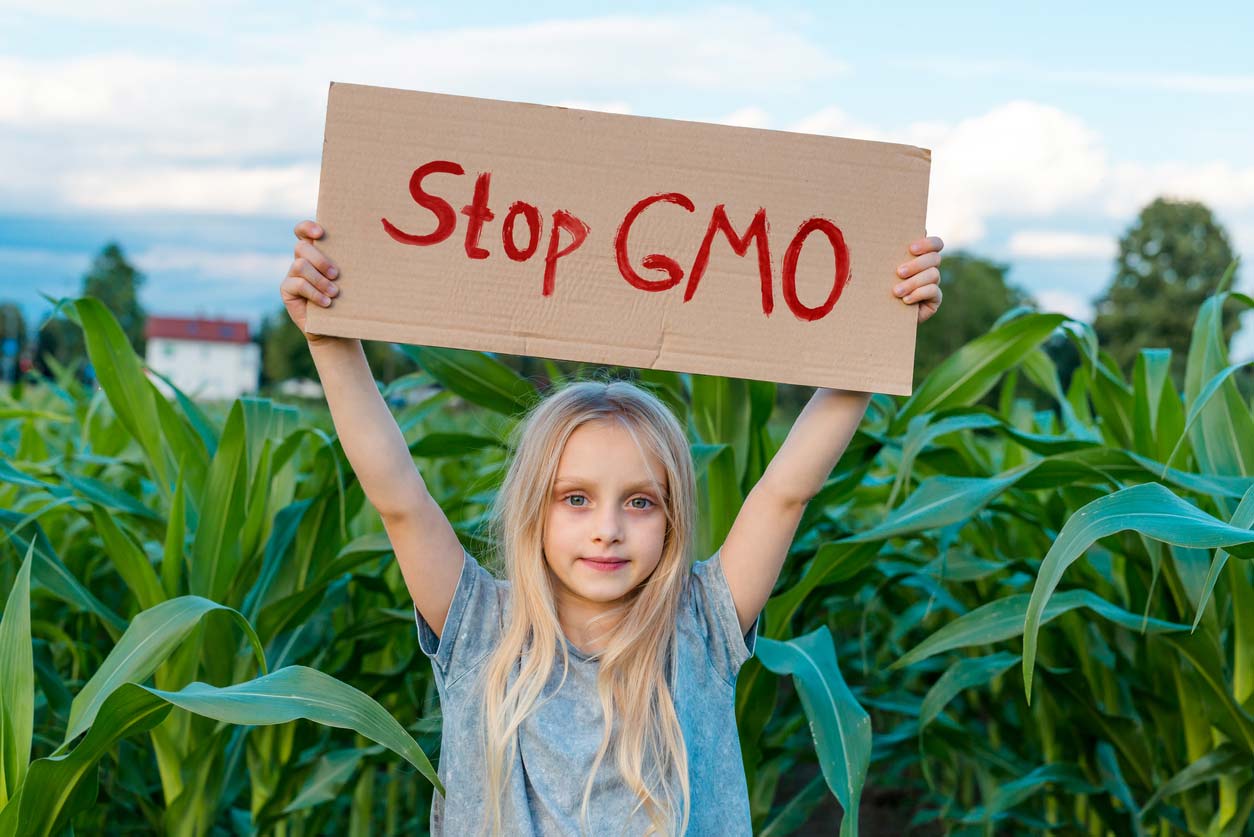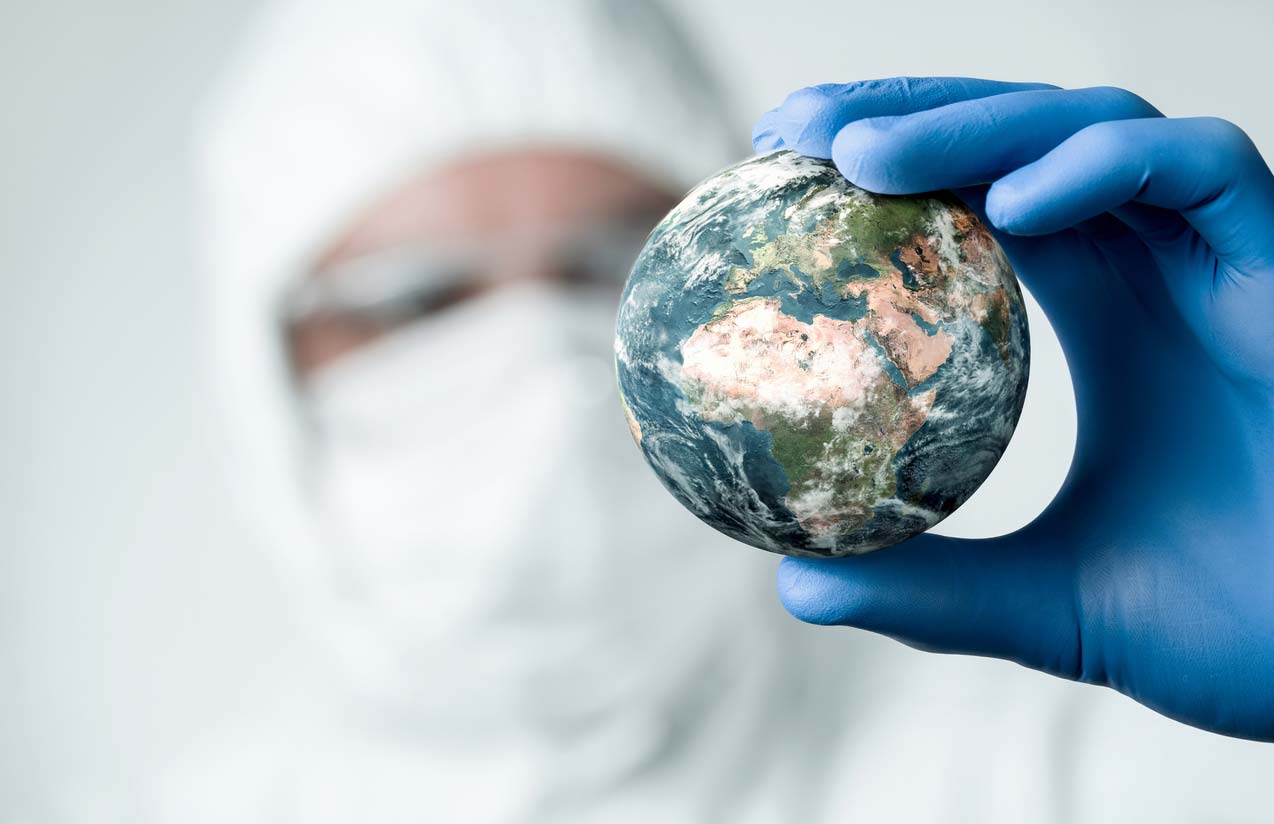https://www.youtube.com/watch?v=SbbqOYGruXc
Below is the edited transcript of the video above:
Ocean Robbins: Welcome to this Food Revolution Conversation. I’m Ocean Robbins, and I’m so glad you’re here with us. And we’re here today to talk about critical new developments around genetically modified organisms, gene-editing, and what it all means to you and to the future of life on Earth.
And we’re here with one of the preeminent experts on the topic, Jeffrey Smith. Jeffrey is an international best-selling author and filmmaker. He’s the executive director of Institute for Responsible Technology, and he’s a leading spokesperson on the health dangers of GMOs.
He is the leading consumer advocate promoting healthier, non-GMO, and organic choices. Jeffrey’s documentary, Genetic Roulette: The Gamble of Our Lives, was awarded the Movie of the Year by the Solari Report, and the Transformational Film of the Year award from Aware Guide.
His best-selling books include Seeds of Deception: Exposing Industry and Government Lies About the Safety of the Genetically Engineered Foods You’re Eating and Genetic Roulette: The Documented Health Risks of Genetically Engineered Foods. You can find out more about Jeffrey’s latest work and his Telly Award-winning film, Don’t Let the Gene Out of the Bottle, at protectnaturenow.com.
So Jeffrey, welcome. It’s so good to be with you.
Jeffrey Smith: Thank you, Ocean. It’s always good to connect. I love it.
Why GMOs Are Concerning
Ocean Robbins: Well, we’ve been talking about these topics for a long time, you and I. And at Food Revolution Network, our mission is healthy, ethical, and sustainable food for all. And you are making the case that genetically modified foods, in general, are not healthy, they’re not ethical, and they’re not sustainable.
Jeffrey Smith: Correct.
Ocean Robbins: High level: why?
Jeffrey Smith: Well, the process causes massive collateral damage in the DNA, which can create, and does create, all sorts of possible toxins, allergens, carcinogens, or nutrient problems. Most GMOs are designed to be sprayed by the Roundup herbicide, which also carries a huge amount of health problems — as well as environmental problems.
Once GMOs are put into the crop or added to the environment, they propagate as a self-generating pollution of the gene pool. And the way that they have been approved has basically been a manipulation of government regulatory agencies of products that never were ready for primetime, should never have been approved, and should be back in the lab for studying. We’re babes in the woods in terms of understanding DNA, let alone the impacts of changing it.
GMOs Are “a Problem, Not a Solution”
Ocean Robbins: Thank you. The promise of the GMO industry was that these crops would give us more drought resistance, bigger yields, less pesticide consumption, better flavor and nutrition profile, and be a net benefit to humanity. But we’re not seeing any of that. Are we?
Jeffrey Smith: No. In fact, the experts at feeding the world say that GMOs actually work against it. That leading report generated by the UN, with over 400 scientists, basically dismissed GMOs as even relevant for feeding a hungry world or creating sustainable agriculture.
And there are ways that it not only works against feeding a hungry world, but it increases the use of pesticides, the dependency of farmers, et cetera, et cetera. It’s been a disaster. One of the co-authors or co-chairman of that report said, it’s basically a solution looking for a problem because it doesn’t fit.
Ocean Robbins: Yeah, absolutely. Because what we’re really doing is creating profits for industries that are coming at the expense of public health and the environment.
Jeffrey Smith: Precisely.
An Increase in Pesticides & GMOs
Ocean Robbins: We have a net increase in pesticides on our croplands. We have way more glyphosate contamination, which is an endocrine disruptor, a probable carcinogen, and an antibiotic.
We have BT in every cell of these plants, which when they’re engineered to produce BT, which is not a chemical you can wash off, it’s a pesticide that certain bugs take a bite and their stomach splits open, and they die. And now we’re getting it with every bite. And that may be impacting the bacteria in our guts as well.
You’ve got the unpredictable collateral damage or side effects from the actual gene-editing process itself. As we change genetic pathways that were created by a force much smarter than us, I’ve got to say, and we never know for sure what this is going to lead to.
But to this point, up until now, most of us have been able to avoid GMOs with a few simple precautions: buying organic, buying certified non-GMO, and avoiding the main genetically engineered crops, which are corn and soy and canola and alfalfa, which is fed to livestock, sugar beets which is half of the sugar supply in the United States… What did I leave out?
Jeffrey Smith: Papaya, zucchini, yellow squash, pink pineapple, as well as cottonseed oil.
Ocean Robbins: Right. So those are, you know, certain products. And if you’ve made sure to go organic or certified non-GMO on those specific things, you massively reduce your exposure.
The Difference Between GMOs and Gene Editing
Ocean Robbins: However, it’s getting a little bit more complicated now. When you started working on GMOs 25 years ago, there were a few crops being introduced. But today, right now, you can buy a do-it-yourself gene-editing kit on Amazon and make a new genetically modified organism in your garage. It’s a whole new world.
And Jeffrey, can you tell us what is the difference between the GMOs you were investigating 25 years ago and the gene-editing that is now coming on the market today?
Jeffrey Smith: Well, the soy and corn, and that long list that you described, came about through taking genes from one species, typically viruses or bacteria, and forcing them into the DNA of other species using rather crude effects.
Biolistics
Jeffrey Smith: So one is biolistics — actually, a gene gun. You coat millions of tiny particles of gold or tungsten and shoot it from a gun into a plate of millions of cells, hoping that some of those genes will work their way into the DNA of some of those cells. Then, you clone those cells into a plant. Or you use bacteria to infect the cell and smuggle your gene in.
Now, you don’t know where it ends up in the DNA. The process creates insertion mutation, and it can change the functioning of many genes, et cetera. And then, when you clone it into a plant, which is the final stage, you create hundreds or thousands of additional mutations.
Gene Editing
Jeffrey Smith: With gene-editing, you insert, basically, two elements: scissors and a guide. Now you may also introduce foreign genetic material to put in, but in its most basic form, the two elements of scissors and the guide. And you may actually use that same smuggling method of bacteria, getting it in there. But once it’s in there, the guide looks for a matching sequence along the DNA.
And when it finds it, tells the scissors to make a cut. And it’s cut in a specific way so that the cell starts to freak out. It’s like, “Oh my God. I can’t replicate with this cut. I’ve got to repair it.” It sends its repair mechanisms. It patches it, but in doing so, you’ve calculated that in the patch, it will generally knock out a gene or remove some aspect of it.
So this is called gene-editing. And CRISPR is the cheapest and most popular variety. This is what you get with the do-it-yourself kits. But the process is still prone to massive collateral damage.
You can end up having cuts in what’s called non-target places, and it’s pretty obvious what that means. You want it to cut this particular gene, but that code it’s looking for, or something close enough to it, is found all over the genome. And you might end up with the scissors cutting all over the genome.
Then, the process of reattaching — you don’t have any control over that. And the cell may grab DNA from the petri dish or cause widespread deletions, mutations, additions, rearrangements, and there could be massive collateral damage up and down the DNA.
In fact, one gene-edited series of studies on human embryos called the results of gene-editing, “chromosomal mayhem.” So even though it can choose more specifically where it wants to make a cut. And even though the biotech industry is repeating the same rhetoric they did 25 years ago that it’s predictable, safe, and that it’s natural, the way it’s being applied in laboratories is entirely unsafe and unpredictable and is not something that occurs naturally in nature.
Why DIY Gene Editing Kits Are Alarming
Ocean Robbins: So are people right now actually buying this gene-editing kit on Amazon and actually editing genes in their garages?
Jeffrey Smith: Yes, they are. And that’s for, you know, $169. And, of course, the price is going to go down. The ability for making changes is going to go up. And then for mail order, for basically the price of eating out for dinner, you can get materials to create new organisms. And when you flush them down the toilet, you’ve created an environmental release, especially in the microbial. It’s not as easy to create a crop, but microbes are much, much easier.
Ocean Robbins: Well, they are. And so potentially are viruses. As of this recording, there’s a pandemic still afoot. And as of this recording, we don’t know how it started, but it may have started in a lab. And, whether or not it started in a lab, we know that future pandemics could.
So, Jeffrey, if you get thousands and thousands of do-it-yourselfers in their garages editing genes, what if one of them is Al-Qaeda, or even a well-intentioned person who doesn’t know better and makes a little mistake? What could happen here?
Don’t Let the Gene Out of the Bottle
View this post on Instagram
Jeffrey Smith: Well, I wanna refer you to the film Don’t Let the Gene Out of the Bottle because it introduces three classes of what could go wrong.
First of all, they can be working on a pathogen, which could create a pandemic. We can talk about that later as a special, bad actor case. But then, there’s the bad actors — even well-intentioned scientists — that may think, “Oh, if I do this, all these good things will happen. We can release the microbe.”
And in [the film], I interview Elaine Ingham. She was working at Oregon State University as a professor. And her graduate student, who was getting a PhD, asked some local scientists whether he could work on a genetically engineered microbe they were creating — that they were planning to send out to farmers all over the country.
It was a “brilliant idea in its narrow box” that this Klebsiella planticola bacterial strain was designed by them to turn cellulose, or plant matter, into alcohol so that when farmers finish their harvest, instead of burning the stubble on their fields, they’d gather it, put it into barrels, add the microbes, and then, two weeks later, they’d have enough alcohol to run their tractors or sell off-farm. And then, they would spread the nutrient-rich sludge as fertilizer. So, it had a lot of pluses.
And they were two weeks away from releasing it outdoors when this graduate student showed up on a Saturday morning in his lab and noticed that all of the wheat seeds that he had planted in the soil mixed with that nutrient-rich sludge had turned to slime. He discovered that that bacterium was continuing to function after the alcohol was made. And if farmers had spread it on their fields, it would have rendered those fields infertile — unable to support life — because every root structure would have been turned to alcohol.
But then Elaine Ingham learned from the EPA whistleblower that they had studied movement of microbes. And we didn’t need a pandemic to know that microbes can travel around the world. They already knew that they released a microbe in Louisiana. And in a few years, it was found everywhere on the planet.
One single microbe could destroy life as we know it and change the balance, collapse ecosystems, and cause human health damage.
I asked her what the logical consequence of this particular alcohol-creating strain would be. And she said it could have been to end terrestrial plant life. So not just a catastrophe, but a cataclysm. And another well-intentioned bacterium was almost released that could have changed weather patterns.
Now, these major bad actors, Ocean — one single microbe could destroy life as we know it and change the balance, collapse ecosystems, and cause human health damage.
Avoiding Microbe Catastrophes
Jeffrey Smith: But we now know about the importance of the microbiome for human health. It has been over 50,000 studies in just five years linking the two. In fact, if you talk to an expert, they say that we have outsourced 90% of our daily metabolic functions to the microbiome. And its brilliance is unmatchable.
For example, some of the breast milk in a mother is indigestible by the infant. Is that a mistake? No. It’s designed to feed the microbiome. It also further inoculates the microbiome.
But we also know that the microbiome is delicate. And if it changes, it can cause health problems. Eighty percent of the chronic diseases are linked to changes in the microbiome, and the microbiome in the soil and outside could collapse ecosystems.
So if you take those thousands of microbes that you release — they travel around the world; they mutate; they swap genetic elements. And now, they’re interacting with all the ecosystems on the planet in ways that did not co-evolve and could create catastrophes.
Ocean Robbins: Well, I don’t think terrifying is a strong enough word for that scenario. And you’re saying we were within two weeks of the release of a microbe that could have ended terrestrial life on Earth? That we’ve come very close to the release of microbes that could change weather patterns? What could happen if this technology gets out into the hands of folks who have no accountability for their actions? And quite frankly, something could be released, and no one would even know where it came from.
Jeffrey Smith: That’s true.
GMOs 2.0 is Gene Editing
Ocean Robbins: So, how are governments responding to these risks?
Jeffrey Smith: There’s, first of all, the generic issue of gene-editing. The biotech industry realized that those of us, you and I, and others who’ve been talking about the health dangers of GMOs, basically rallied the whole world. Fifty-one percent of Americans and 48% of worldwide consumers believe that GMO foods are bad and dangerous for health, specifically.
And so, they did not want their new GMO 2.0 facing the same fate. So their number one priority has been to convince governments and consumers to look the other way and say, “Oh, gene-editing is safe and predictable. It’s just basically like breeding; it uses natural techniques. You should not even require being notified if someone wants to create gene-edited organisms.”
And Australia said ‘yes’ to a whole class of gene-editing. So did the United States, and now Canada and the UK are under heavy attack. They’re making their decisions now whether they’re going to completely deregulate gene-edited organisms. The EU treats them like other GMOs, but they’re under pressure. Japan has capitulated; Brazil has capitulated; Argentina has capitulated.
So we have a situation where, if we simply do nothing, we could expect hundreds of thousands or millions, especially of the microbial generation, which could end biological evolution as we know it. And in many scenarios, as you just said, they could cause catastrophes or cataclysms.
Ocean Robbins: Okay. Well, we’ve got to face what we’re up against. But we promise we’re not going to stay in doom and gloom this whole time.
Gene Editing Could Replace Nature
Ocean Robbins: Jeffrey, why is it that you say gene-editing could replace nature?
Jeffrey Smith: Well, you know, we made a list of 12 GMO crops a moment ago, and that was 25 years in. But now that gene-editing is so cheap and easy, everything with DNA is being targeted: from bacteria to butterflies, from algae to animals, everything — fungus to flowers. And there’s not only the Home Depot version, there’s also AI-driven robotics in facilities that can drive hundreds or thousands of different combinations all the time.
So once you release a GMO in the environment, it can self-propagate and be there permanently. GMOs are prone to side effects, so it’s like little biological time bombs. If you put out enough, they start interacting, reproducing, swapping new genetic combinations. Future generations will not inherit the products of the billions of years of evolution, but rather be skewed with products of laboratory creations prone to side effects. And so, you can’t recall one GMO from the gene pool, let alone thousands or millions of them.
And so, we’re at an inevitable time in human history where humanity can easily redirect the streams of evolution. Permanently. This new technology demands new responsibility, which is what our Protect Nature Now campaign is all about.
And we’re first focusing, as you might imagine, on the microbes, including the potentially pandemic pathogens. But the microbes themselves travel, swap genes, and are the basis of health problems. There are an estimated one trillion species of microbes, and their interactions are way beyond our ability to compute, let alone predict.
We’re already introducing microbes into the environment in the Midwest for soil remediation that could end up in the infant stomachs in Mongolia, and in the atmosphere, and in a volcano, et cetera. And we don’t have any idea what that will mean for the ecosystems.
Gain-of-Function Research
Ocean Robbins: Jeffrey, there’s a lot of controversy about so-called gain-of-function research and its applicability in labs. I know that one of the things you’re sounding the alarm on is that when you combine lab-generated pathogens with gain-of-function research, there’s a possibility of creating more pandemics in the future. And you’re trying to stop that. Help us understand: what is gain-of-function research? And is that connected to gene-editing?
Jeffrey Smith: Well, yes, it is. There’s a theory that some scientists have that in order to best prepare ourselves for preventing future pandemics — for surveilling the environment to see if animal viruses are getting close to what could affect humans, to possibly create immunization strategies — we need to take viruses that are out there and make them deadly and easily transmissible, so we understand what we are dealing with.
And in the film, Don’t Let the Gene Out of the Bottle, we didn’t need to try and say that COVID-19 was created from the Wuhan Institute of Virology. That’s not necessary. All we had to do is say H5N1 is up to 24 times more lethal than the COVID-19 virus. It killed 60% of the people that had contracted the avian flu.
It’s an H5N1 avian flu. But very few people contracted it because you have to be around bird livestock for a long period of time. And only a few hundred people contracted it. But two different labs took the natural H5N1 and made it airborne, which could theoretically create a pandemic that could decimate the population of the world.
Now, you might think, “well, it was in a bio-secured lab.” USA Today dismisses that myth where they report over years, that hundreds and hundreds of accidents, over 1,000 accidents, have occurred at high-security laboratories dealing with some of the most dangerous pathogens. Even the CDC had to shut down its anthrax laboratory and its flu laboratory after mistakes in potential contamination.
And in the same week that it discovered its problems, they found a cardboard box full of live smallpox in a storage area in Maryland that had been there since 1954. So there are situations where we know that secured containment is a myth. Therefore, we shouldn’t tempt fate by creating these potentially pandemic pathogens.
And from what we know, they actually haven’t delivered the so-called benefits. They haven’t resulted in preventing anything. But they could create the pandemic it’s trying to prevent.
Focusing on Microbes
Ocean Robbins: Yes. Okay. So now, let’s get to part two. What are you doing? And what can we do? Because you didn’t just come here to scare the living daylights out of us. You came here to talk about what we can do to turn this around, right? So let’s talk about that.
Ocean Robbins: What’s your strategy, Jeffrey?
Jeffrey Smith: Well, we decided, for many reasons, as I mentioned, to focus on microbes. They are the most dangerous. But also, there’s not a lot of institutional investment in releasing microbes right now. So it’s not like we have to pull up millions of crops by focusing on microbes. And because of the pandemic, there’s an appreciation of the spread of microbes, the mutation of microbes, and how they can wreak havoc — way more than people have thought about before the pandemic.
So there is a political will and a receptivity like never before; our timing is perfect. Now, what we need to do — unlike what you and I have been working on for 25 years of getting people to eat healthier, which in turn drives the decisions by institutions, food companies, and then farmers — is we need to institute laws.
And so, we have on protectnaturenow.com, right next to the film, we have an advocacy platform where, in a few quick clicks, you can send pre-populated messages, tweets, and Facebook messages to all of your elected officials. And we did this in the US in three different campaigns. Over 2,000 elected officials were contacted. We also had a media module where over 1,300 media reporters were contacted. You could post things directly on your own social media as well.
And we know from the political consultants that we have hired in DC, who we’re working with, that there is political interest right now. There are people that will jump on board today to back new legislation. But they and others want more demonstration of support from people going to that and sending the click-and-send. Or better yet, customizing your own letter. So this is critical right now.
We know we have support in Congress. We’re also going to state assemblies, and there’s some support there at this point. We want to demonstrate more, and that’s just the United States.
The Global Protect Nature Now Campaign
View this post on Instagram
Jeffrey Smith: Our plan, the Protect Nature Now campaign, is globally conceived. We not only want every major government to block the outdoor release of all GMOs, and assign strict liability in case of release — and to stop the gain-of-function in potentially pandemic pathogens — we want the Convention on Biological Diversity, that UN instrument, and other international treaties to lay out the same.
We will also have the opportunity for state assemblies, and even local governments around the world, to be able to assign strict liability in case someone’s microbe enters their jurisdiction, which provides a tremendous suppression of motivation for those that want to release microbes, knowing that they have to pay for the remediation and cleanup.
So we have a program in place. And we have a big vision, which we can do because we have created a global movement. We’ve created a global anti-GMO movement. I’ve spoken in 45 countries and helped train and work with tens of thousands of activists.
So, we are now building a new global movement. And this one is aimed at government laws at the perfect time as we come out of the pandemic when we need to implement the lessons that we have learned.
And you’re right; terrified is not a strong enough word. I don’t know what the word would be. But we don’t have to fight, flight, or freeze in terms of our nervous system response. We can be proactive, and we can say, “Let’s do this.”
And when we do this, what we’re doing is protecting all living beings and all future generations. Our ancestors never had that opportunity. This is an honor, and this is the calling of this time because we have the technology.
And what has to happen? We need to change the relationship for our survival, between humanity and nature. We need to be stewards. And there’s the threat of the stick and the lure of the carrot. But this is the need of the time. It’s odd that the need of the time is to expand consciousness and do things in a different way as part of nature in order to survive and not perish.
Ocean Robbins: Yes. Okay. Thank you for that. Big vision; big potential.
Affecting Public Policy
Ocean Robbins: You know, with the GMO movement, a lot of the focus has been on voting with your dollars, essentially saying, if enough consumers reject genetically modified organisms, then food manufacturers and producers, and eventually growers, will change some of their practices. And to some extent, that’s happening. We’ve got a long way to go. But non-GMO certified foods have become a $26 billion industry in the United States. And it was nothing 10 years ago. And you’ve had a lot to do with that.
But now, with this, with the gene-editing dynamics and the gain-of-function research, you’re really focusing on government policy at a local level, at a state level, at a national level, at a global level. And that stems from generating enough public outcry to say, “This isn’t cool! And we need some regulations here that prevent the wanton — reckless, potentially — creation and release of microbes that could have devastating consequences to life on Earth.”
Embedding the Knowledge of GMOs in Our Culture
Ocean Robbins: So your movie, which won a Telly Award… Congratulations —
Jeffrey Smith: Thank you.
Ocean Robbins: It tells the tale… It’s a short watch. Tell us about the film and how people can watch Don’t Let the Gene Out of the Bottle.
Jeffrey Smith: It’s at protectnaturenow.com. It’s 16 minutes. You can watch it for free. You can share it widely. And we hope that you do. It not only generates a desire for action, it educates in one fell swoop about what’s at stake.
And I failed to mention one thing, Ocean. When dealing with something so severely threatening, we can’t just accept this generation’s laws because laws and governments are mutable.
I remember being flown, years ago, to Poland by the Polish government, and giving a press conference with non-GMO policies. And literally, a week later, a new government was voted into place that was pro-GMO. So there are new regimes; there’s the ability for special interests to apply pressure.
So, in addition to the laws, we need to make sure that the knowledge of this responsibility is embedded in our culture, in popular culture, in schools and books and films and whatnot.
I mean, we understand how big this is. Our program is going to cost us tens of millions of dollars to implement around the world. We have over 50 allies right now, and we’ve just started this year. And Food Revolution Network is an ally of this campaign. Thank you, Ocean.
But we’re going to end up with thousands of allies. Just like people know about climate change, they have to know about this.
And so getting this film out to as many people as possible does both: it gets people to go and participate in the advocacy platform, but it also gives people the first taste, the wake up alarm to this issue in ways that’s easy to watch. It’s fast-paced; it’s short, and it gives not only the shocking evidence that we talked about, but it shows there’s hope for the future.
Get Involved to Protect Our Future
Ocean Robbins: Yes. So you can watch it, and you can share it with everyone you know, at protectnaturenow.com. You can watch the movie. And, if you like, you can join in, and become an activist, an agitator, an activator, and a leader in this movement. Because, you know, Jeffrey, you’ve always represented to me a new paradigm of leadership in the world, which is about helping everyone to become informed, to become empowered, and to become a galvanized creator of the possible future. Rather than looking to one person to tell us what to do — and you’re boldly giving us a lot of wisdom and insight — you’re also looking to all of us to play our part in a bigger movement. It’s so much bigger than any one person.
The bottom line is if you’re a human being on Planet Earth today, who wants to see a safe, viable, sustainable, livable world for future generations, who wants to protect nature, then you have a stake in this. If you have kids or grandkids or nieces or nephews, or just loved ones who are going to be around in the future, they have a stake in it too. And, literally, all of life could be on the line. So, this is an opportunity, right now, to get informed.
Solving a Problem Before It Comes a Pandemic
Jeffrey Smith: Ocean, you are so articulate. I just am honored to be here with you. I will add one thing, which I typically forget. And if people want to make a donation to our nonprofit, you can do it also at protectnaturenow.com. And if you do make a donation, please tell others that you have when you share the film. Because as I said, the price tag of this may be tens of millions of dollars by the time we’re successful. But it’s well-spent. The return on investment is pretty high.
Ocean Robbins: Right. Well, it’s a lot easier to solve a problem before it becomes a pandemic —
Jeffrey Smith: Indeed.
Ocean Robbins: — if I think we’ve seen that.
Jeffrey Smith: Yes.
Ocean Robbins: All right. Well, thank you, Jeffrey, so much for your work, for your vision, for taking the time to be one of the foremost experts in the world on some topics that are not a lot of fun to think about, but it’s pretty important. So on behalf of myself and my children and perhaps my future grandchildren, on behalf of all of us who have a stake in the future of life on Earth, I thank you.
Jeffrey Smith: Thank you, Ocean.
Tell us in the comments:
- Do you avoid GMOs?
- Were you aware of the accessibility and dangers of gene-editing?
- Do you plan on getting involved in helping to stop the spread of GMOs 2.0?
Feature image: iStock.com/DrAfter123
